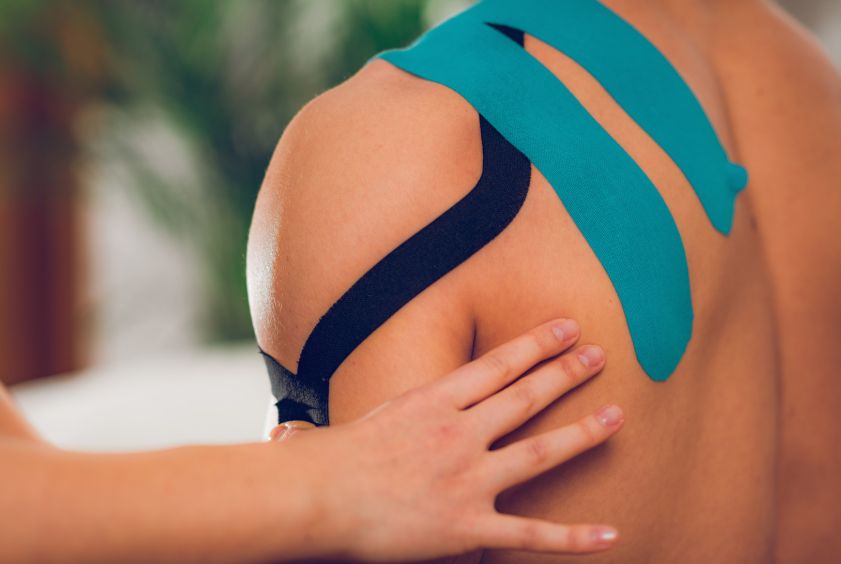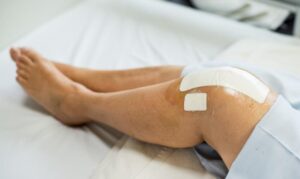After undergoing surgery, recovery can be a challenging and long process. Effective post-surgery rehabilitation is crucial to ensure a smooth recovery and regain full functionality. While traditional methods like physical therapy and medication are commonly used, an increasingly popular approach is Kinesio taping. Kinesio taping is a technique that uses special elastic tape to support and facilitate the body’s natural healing process. But how exactly does Kinesio taping help in post-surgery rehabilitation? In this article, we’ll explore the many benefits of Kinesio taping and how it can accelerate your recovery after surgery.
What is Kinesio Taping?
Kinesio taping is a therapeutic technique that involves applying an elastic cotton strip with an acrylic adhesive to the skin. Unlike traditional rigid tape, Kinesio taping is designed to stretch with the skin and muscles, providing support without restricting movement. First developed in Japan by Dr. Kenzo Kase in the 1970s, Kinesio taping has gained worldwide recognition for its ability to enhance rehabilitation by promoting circulation and reducing pain. It is commonly used for treating injuries, but it also plays a significant role in post-surgery rehabilitation.
There are different types of Kinesio tape, each designed for specific uses, such as supporting joints, reducing swelling, or aiding muscle recovery. When applied correctly, Kinesio taping can provide sustained support during rehabilitation without causing discomfort or limiting movement.
The Benefits of Kinesio Taping in Post-Surgery Rehabilitation
Kinesio taping offers several key benefits that make it particularly effective in post-surgery rehabilitation:
Pain Reduction
One of the most significant benefits of Kinesio taping in post-surgery recovery is its ability to reduce pain. The tape gently lifts the skin, which can alleviate pressure on the affected area and decrease pain by stimulating sensory nerves. This reduction in pain can allow patients to engage in rehabilitation exercises sooner, leading to a faster recovery.
Improved Circulation
Post-surgery, blood flow can be restricted, leading to slower recovery times. Kinesio taping helps improve circulation by gently lifting the skin, which increases the space between the skin and underlying tissues. This facilitates better blood flow and lymphatic drainage, helping to remove waste products and deliver nutrients to the healing tissues, thereby speeding up recovery.
Support without Restricting Movement
Traditional taping methods often immobilize joints or muscles, restricting natural movement during rehabilitation. In contrast, Kinesio taping supports the body without limiting the range of motion. This is particularly important after surgery, as it allows patients to regain mobility while still providing the necessary support to the affected area.
Reduced Swelling and Inflammation
Swelling is a common issue after surgery and can delay healing. Kinesio taping helps to reduce swelling by improving the flow of lymphatic fluid, which is responsible for draining excess fluid from the body. By reducing swelling, Kinesio taping can enhance comfort and speed up the rehabilitation process.
How Kinesio Taping Supports Healing in Different Surgeries
The benefits of Kinesio taping can be applied to a wide range of surgeries and injuries. Here’s how Kinesio taping can support healing in different types of surgeries:
Orthopedic Surgeries
For those recovering from orthopedic surgeries, such as knee, shoulder, or hip surgery, Kinesio taping can provide invaluable support. After a knee replacement, for instance, Kinesio taping can help stabilize the knee while still allowing patients to perform rehabilitation exercises. It can also reduce pain and swelling around the joint, helping patients regain mobility more quickly.
Soft Tissue Injuries
Surgeries that involve soft tissue repair, such as ligament or tendon surgeries, can benefit from Kinesio taping. The tape supports the injured area without immobilizing it, enabling the patient to perform gentle movements that encourage healing. By reducing inflammation and improving circulation, Kinesio taping can also prevent complications like scar tissue buildup.
Joint and Ligament Rehabilitation
Kinesio taping is also beneficial for patients recovering from surgeries involving joint or ligament damage. For example, after an ankle sprain surgery, Kinesio taping can provide joint support and promote quicker healing by reducing swelling and enhancing lymphatic flow. It can also help maintain the functional alignment of the joint, reducing the risk of re-injury.
How to Apply Kinesio Tape for Post-Surgery Rehabilitation
Proper application of Kinesio taping is crucial for maximizing its benefits. Here’s a step-by-step guide for applying Kinesio tape after surgery:
- Prepare the Skin: Make sure the skin is clean, dry, and free of oils. Shave any hair around the surgery site if necessary, as hair can interfere with the tape’s adhesive.
- Measure and Cut the Tape: Cut the tape to the appropriate length. Typically, the tape should extend beyond the affected area by at least 2-3 inches on either side.
- Apply the Tape: Place the tape over the target area, applying it with gentle tension. For pain relief, the tape should be applied with mild stretch. If you’re focusing on reducing swelling, apply the tape without tension.
- Rub the Tape: After applying the tape, rub it gently to activate the adhesive, ensuring that it sticks firmly and comfortably.
Before applying Kinesio tape, it’s recommended to consult with a healthcare professional to ensure it’s suitable for your recovery needs. They can also teach you the best techniques for specific types of surgeries.
Scientific Evidence Supporting Kinesio Taping in Post-Surgery Recovery
Numerous studies have shown the effectiveness of Kinesio taping in promoting faster recovery and reducing pain post-surgery. Research has found that Kinesio taping can improve joint function, reduce muscle tension, and enhance blood circulation. A study published in the Journal of Physiotherapy found that Kinesio taping effectively alleviates pain and improves mobility in patients recovering from knee surgery. Other studies have highlighted its role in reducing inflammation and accelerating healing, making it a valuable tool in post-surgery rehabilitation.
Many patients and healthcare providers alike have praised the benefits of Kinesio taping as part of a comprehensive rehabilitation program. By incorporating Kinesio taping into a recovery plan, patients often experience quicker, more comfortable healing.
Is Kinesio Taping Suitable for Everyone Post-Surgery?
While Kinesio taping can be highly effective for many post-surgery patients, it’s not suitable for everyone. Individuals with sensitive skin or allergies to adhesive products may experience irritation or discomfort. Additionally, patients recovering from certain surgeries, such as those involving deep tissue damage or complex fractures, may require a more cautious approach.
Before starting Kinesio taping, it’s essential to consult with a healthcare provider who can assess whether this method aligns with your recovery needs. They will guide you on whether Kinesio taping is appropriate and provide instructions on how to apply it properly.
Takeaway
Kinesio taping is an effective and versatile tool for post-surgery rehabilitation. It offers multiple benefits, including pain relief, improved circulation, and enhanced mobility, all of which contribute to faster healing. Whether you’re recovering from orthopedic surgery, soft tissue repair, or joint rehabilitation, Kinesio taping can support your recovery in a way that traditional methods often can’t. Always consult with a healthcare provider to ensure that Kinesio taping is a suitable addition to your rehabilitation plan.






